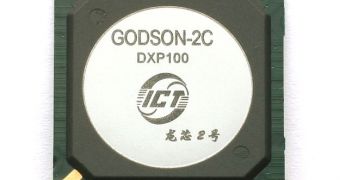Over the course of the last few years, China has been making great efforts trying to develop its own CPUs and it now seems like ICT, the institute behind the development of the Loongson chips, is finally getting ready to tape out the Loongson 2H SoC that is destined to be used in mobile devices.
The processor is also known as Godson in the academic circles and it should compete with chips from both Intel and ARM.
Since Loongson 2H uses a SoC design, the processor packs a CPU core, a graphics core, a memory controller and all the usual southbridge functionality on the same die in order to reduce the power consumption of the system.
Just like the previous 2G revision of the chip, the Loongson 2H also uses a 4-way superscalar core with out-of-order execution based on the MIPS64 instruction set.
This enables it to run a variety of operating systems, but the chip will mainly be using the Chinese Red Flag Linux distribution.
According to SemiAccurate, the core consumes 4W at 1GHz and includes 64/64KB L1 cache and 512KB of level 2 cache.
The integrated GPU was licensed from Vivante, it should be able to accelerate 1080p video content playback and features a unified vertex and fragment/pixel shader architecture with full OpenGL ES 2.0 Shading Language support.
China's Loongson 2H is expected to tape out in a few weeks and is built by ST Microelectronics using the 65nm manufacturing node.
In electronics design, the “tape out” term is used to describe the final result of the design cycle of a chip and means that the integrated circuit can be sent to the foundry for manufacturing the first physical samples.
These will then go through a number of spins as the design is further refined to eliminate any potential flaws that made their way into the integrated circuit, so no one can tell at this point when Loongson 2H will begin shipping.

 14 DAY TRIAL //
14 DAY TRIAL //